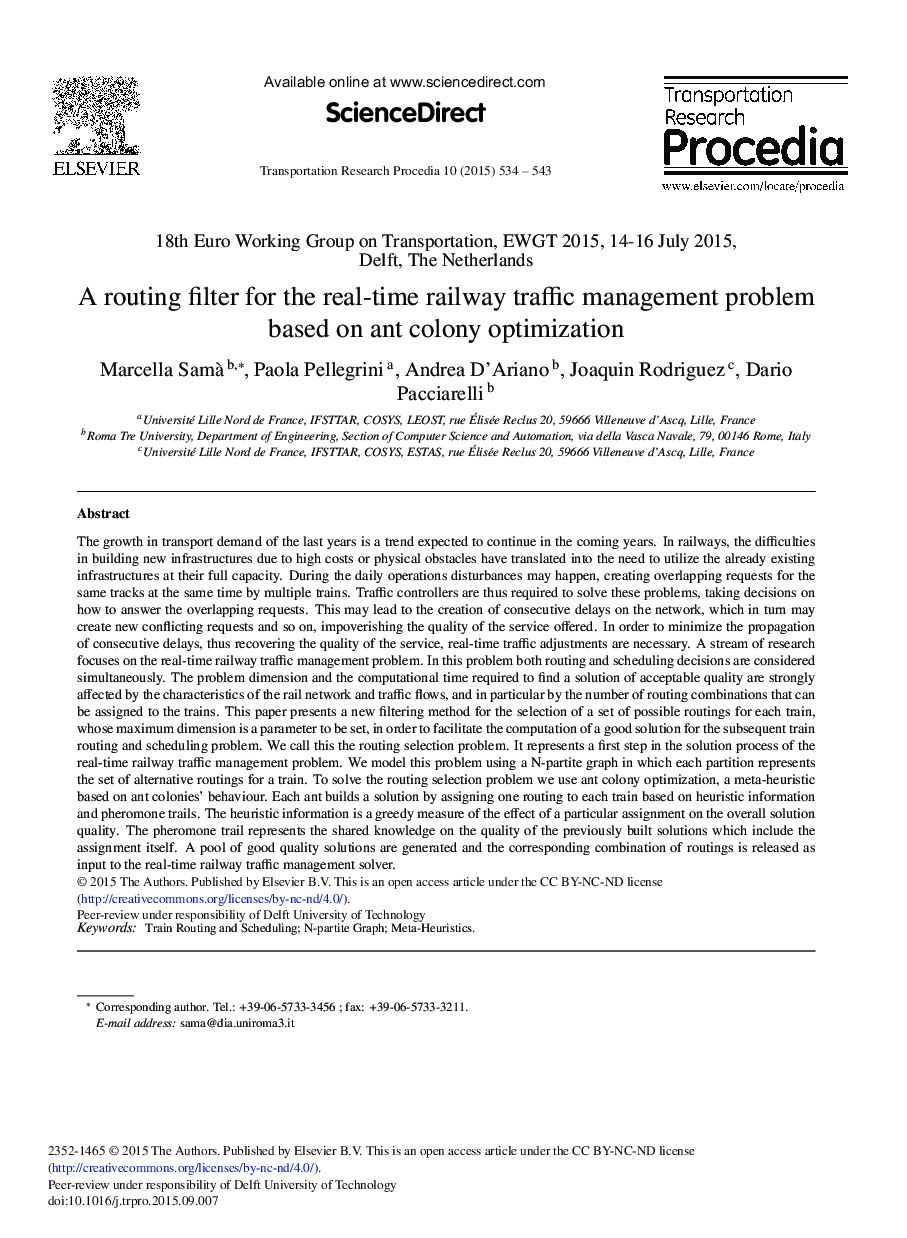| کد مقاله | کد نشریه | سال انتشار | مقاله انگلیسی | نسخه تمام متن |
|---|---|---|---|---|
| 1106864 | 1488285 | 2015 | 10 صفحه PDF | دانلود رایگان |
The growth in transport demand of the last years is a trend expected to continue in the coming years. In railways, the difficulties in building new infrastructures due to high costs or physical obstacles have translated into the need to utilize the already existing infrastructures at their full capacity. During the daily operations disturbances may happen, creating overlapping requests for the same tracks at the same time by multiple trains. Traffic controllers are thus required to solve these problems, taking decisions on how to answer the overlapping requests. This may lead to the creation of consecutive delays on the network, which in turn may create new conflicting requests and so on, impoverishing the quality of the service offered. In order to minimize the propagation of consecutive delays, thus recovering the quality of the service, real-time traffic adjustments are necessary. A stream of research focuses on the real-time railway traffic management problem. In this problem both routing and scheduling decisions are considered simultaneously. The problem dimension and the computational time required to find a solution of acceptable quality are strongly affected by the characteristics of the rail network and traffic flows, and in particular by the number of routing combinations that can be assigned to the trains. This paper presents a new filtering method for the selection of a set of possible routings for each train, whose maximum dimension is a parameter to be set, in order to facilitate the computation of a good solution for the subsequent train routing and scheduling problem. We call this the routing selection problem. It represents a first step in the solution process of the real-time railway traffic management problem. We model this problem using a N-partite graph in which each partition represents the set of alternative routings for a train. To solve the routing selection problem we use ant colony optimization, a meta-heuristic based on ant colonies’ behaviour. Each ant builds a solution by assigning one routing to each train based on heuristic information and pheromone trails. The heuristic information is a greedy measure of the effect of a particular assignment on the overall solution quality. The pheromone trail represents the shared knowledge on the quality of the previously built solutions which include the assignment itself. A pool of good quality solutions are generated and the corresponding combination of routings is released as input to the real-time railway traffic management solver.
Journal: Transportation Research Procedia - Volume 10, 2015, Pages 534-543
